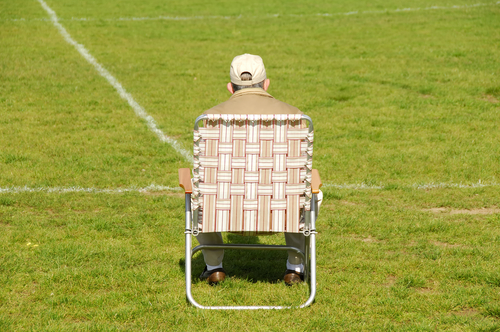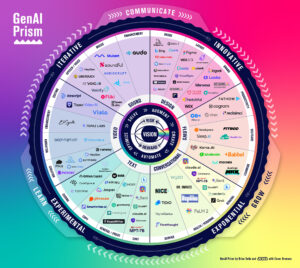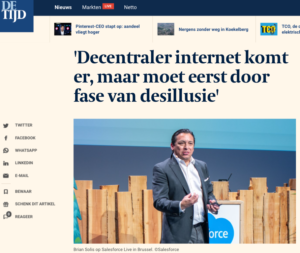Guest post by Francisco Dao, noted tech author and founder of 50Kings
If you logged on to any of your social media accounts this past Monday you undoubtedly saw an outpouring of posts thanking our veterans for their sacrifice along with multiple links to the typhoon Haiyan disaster in the Philippines. As I scrolled through my feeds I started to wonder if the appearance of support was actually discouraging people from helping either group. How many people decided posting was enough? Have social media platforms become the ultimate example of the bystander effect where nobody does anything because they assume someone else will?
The bystander effect is a well documented sociological occurrence in which people do not offer assistance when others are present. Instead, they share. The more people who appear to be available to help, the less likely any one of them will help. In some cases, such as the murder of Kitty Genovese which brought the bystander effect to the public’s attention, nobody will step up to provide assistance because everyone assumes somebody else will.
If you consider that social media platforms such as Facebook and Twitter resemble massive online rooms full of people, they present the perfect conditions for the bystander effect to take hold. Most of us have hundreds of Facebook friends, surely someone will step up and offer aid, right? Considering so many of them are posting about the issue it’s not an unreasonable assumption, but when everyone assumes the same thing, nobody ends up doing anything.
My friend Brian Solis led a project for the United Nations in 2010 to help increase awareness of Malaria in Africa and also generate $10 donations for bed nets. He found that initially most people shared rather than donated, essentially accomplishing just one of the two goals. In his research to uncover why, he found that people believed that their act of sharing was worth much more than a $10 contribution. He found that people truly thought that their digital influence or social capital equated to tens or even hundreds of individual donations from their connections. This inflated sense of net worth in social, if not reassessed individually, will only bankrupt the real nature and value of the network effect as Brian would say.
What happens when everyone believes they have excessive digital influence and social capital?
When we delve deeper into the factors that contribute to the bystander effect, we find that distant problems shared on social media present the ideal conditions for lack of action.
1. Ambiguity of need. If people aren’t sure what kind of help someone needs, they are less likely to offer. In the case of veterans, some need help but many are successful. Furthermore, most people don’t know how or where to offer assistance. The veterans administration? Find a random charity? Give a dollar to the guy on the corner who claims to be a veteran? Both the need and the manner of providing aid are ambiguous. In the case of typhoon Haiyan, the problem is literally on the other side of the world. All we know is what we see in pictures and what we know from a few links that might have a donation button. Social media helps us share our sentiments but does little to clarify the ambiguity of the problem at hand.
2. Cohesiveness of the group. A group which shares strong bonds between its members is more likely to offer help over one with weak bonds. Social media bonds are largely virtual. We don’t really know many of our social media connections at all. Using myself as an example, I have 911 Facebook friends and I’d estimate I’m legitimately friends with maybe 100 of them. The rest are basically entries in an online Rolodex. A social media group is likely to be far less cohesive than one you would encounter in the real world.
3. The option/possibility of diffusing responsibility. As I mentioned earlier, the larger the group the less likely people are to step in and help. In a small group, it is unreasonable to assume that someone else, or someone more qualified, is available to provide aid. But in a large group, it becomes easier to assume that there are people who are better equipped to offer assistance, and therefore easier for any one person to ignore the problem based on the assumption that someone else will take responsibility. In a giant “room” such as a social media platform, it is no stretch to take for granted that someone else will be there to help.
Returning to veteran’s day and typhoon Haiyan, I’m curious to see how our actions compare to what we display on social media. How many of you posted or tweeted some message of thanks to veterans without contributing anything of value that might be helpful to a veteran in need? How many of you shared a link about typhoon Haiyan without donating anything to aid in the Philippines? I’ll volunteer myself as the first hypocrite. I didn’t post about veterans day but I did share links about typhoon Haiyan and until I wrote this post, I had not contributed. I have now.
The social psychology of the bystander effect is proven and likely working against you. Don’t let social media turn you into a do-nothing.






A very interesting topic, and one that is so very relevant as we spend more and more time in these virtual rooms.
For myself I know that I definitely need clear calls to action otherwise I won’t do anything. Social media updates with clear links to donation points or calls for particular items (clothing, food, etc) do spur me to actually do something, as opposed to ones that simply acknowledge the issue with some sort of ‘thinking of you’.
Thanks for this thoughtful guest post on a topic that’s been on my mind lately. Recently a nonprofit organization I support developed a first ever team to run in the New York Marathon and two members were patients. It would seem like no big deal except our cancer was terminal until a breakthrough treatment in oral form came out just in 2001. Treatment is $100K a year. The event was a fund-raiser to support a program that helps patients with financial needs. The posts drew far more”likes” and shares and so forth in social media than the norm, and there was significant sharable media coverage from the New York papers and broadcast media. Most people just “liked” or “shared” what they saw and didn’t go further. I think a key factor is how content is viewed, that those using phones often don’t drill down into links that have more information or use the phone to fill out forms to donate. And, in a patient community, the lack of action may not stem from a sense of “digital influence.” It may reflect not understanding that they do have influence and if they make information personal when sharing it they can influence others outside of the patient community to take action. We need to better understand the “bystander effect” and find ways to drive more action.
I would say yes that social media is a perfect example of
the “bystander effect”. When it comes down to social media platforms and the “bystander
effect”, some people will post stuff but then there are others that will sit
back and wait for others to post something rather than taking the first step to
post. You make some very interesting
points! I agree with you when you talk about the three distinct problems shared
on social media, Ambiguity of need, Cohesiveness of group, and The option/possibility
of diffusing responsibility. These were good points. If people don’t know how to help they are less
likely to stay out and not give any input, if you have a group with a strong
bond with members and a group with weaker bond with members the stronger group
is the group that would usually tend to give help rather than receive it, and your
right the larger the group there is the less likely there is for people to
contribute and help where as if you have a smaller group there is more of a
chance for people to get involved.
I love this post. This brings me back to the time that everyone was posting about marriage equality through Facebook some time earlier this year. Remember that picture that everyone set as their profile pictures with the red box and an equal sign in the middle? This is exactly a case of the bystander effect, just as Veterans Day is a great example. So many people posted this picture to show their support for gay rights and marriage equality. But, in reality, how did this encourage any change- how did this get people up and fighting for equal rights when all it did was encourage people to sit at their computers and share a picture? I think that sharing pictures and thoughts about such serious things like marriage equality and Veterans Day is nice, and does show public support. However, you’re 100% right in the fact that it does encourage the bystander effect. People don’t donate, or go out to city hall and hold signs up for marriage equality- they just post on Facebook. It encourages no action being taken on serious issues. Instead of using social media as a way to be bystanders, we should be using it as a stool- a stool to step on and start climbing. Posting about serious issues is only the bare minimum of what we should be doing. Using Facebook and twitter as stepping stools of encouragement into actually doing something is the only way that we as avid social networking users can avoid being bystanders.
The “change your profile pic” is the worst kind of “activism”
Great post! Thoughtful and provocative. Social networks have the power to influence change, however, just as businesses seek to activate a specific action with their marketing campaigns so too must social cause campaigns. Social causes (and people who support them) should always look at ‘closing the sale’ by asking of their friends/family a call to action. We must keep in mind too that a social cause campaign may not be one that people necessarily suits and supports and that’s ok. In my view, a simple share is also a donation to the awareness of the need which is fine too. The virtual ‘protest’ as a great collective has its merits (ie. changing ones profile pic) especially as a sign to those decision makers that there is a groundswell of support for or against a particular issue. Definitely not one to ignore. Yes, the bystander effect is real, however, the digital crickets effect is much worse.
The area I think many social cause campaigns need to address is the transparency of how much money people donate. I believe the amount one donates should be private no matter the value hence the appeal of campaigns that simply ask for a simple low flat fee donation (with a ‘if you’d like to donate more please specific the amount’ integrated into the splash page to enable people to give more if they wish). People should be given the choice for an anonymous donation too.
Thanks for this post Francisco!
Very interesting article. I think people – want – to do something rather than be bystanders. But social media gives people a chance to “feel” that they did something through facebook likes or tweets rather than actually engage in the act of helping. This might work in a political campaign where people want to express their opinions. However, when we put it in the context of how many people actually donated or volunteered to a hurricane relief fund, the bystander effect is clearly evident. It almost seems as if social media is a “way out” for people who want to live in an illusion that they are contributing when in reality, they are not.
This is an awesome article. I couldn’t agree more. I love non profit organizations and initiatives that benefit the public good, but I had never really thought of social media and the bystander effect impacting those organizations in this way. It’s really eye opening and really something to think about before posting. Don’t just share, do! Thanks for such a thoughtful post!
I am so guilty of partaking in the bystander effect, I’m the first one to tweet, “Thank a veteran!” And probably the last one to actually thank a veteran. How embarrassing. I think people (obviously myself included) don’t even realize this is what we’re doing. We are so convinced we are doing something my acknowledging the event, and that for sure someone will step up and do something because we remind them to. My eyes are opened. Thanks for this!
Very interesting perspective.
I haven’t really thought much of this issue before, but now I can provide an example myself.
In Ukraine and Russia, it is very common to ask people for their financial help with the medical costs. In those countries, the quality medical care can be pricy while the salaries are low, therefore parents of kids who are sick cannot take proper care of them. So the refer to social network and publish posts with a call to action “please donate”.
A lot of people feel compassionate yet the most they usually do in this situation is re-share the post to make it available in their circle. Not a lot of people actually get the help they need.
Just like the eternally true phrase “Be your own competition” is important to politics and war and business (homonyms) so it is true that the “protest space” is always taken up by Agents Provocateurs. As such is Sympathy Space taken up by useless tripe like “Support the Troops” placards in shop windows. Same same.